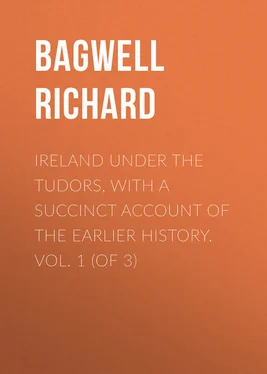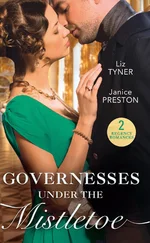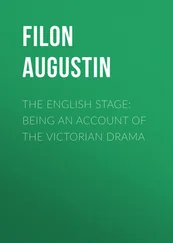Richard Bagwell - Ireland under the Tudors, with a Succinct Account of the Earlier History. Vol. 1 (of 3)
Здесь есть возможность читать онлайн «Richard Bagwell - Ireland under the Tudors, with a Succinct Account of the Earlier History. Vol. 1 (of 3)» — ознакомительный отрывок электронной книги совершенно бесплатно, а после прочтения отрывка купить полную версию. В некоторых случаях можно слушать аудио, скачать через торрент в формате fb2 и присутствует краткое содержание. Жанр: foreign_antique, foreign_prose, Историческая проза, на английском языке. Описание произведения, (предисловие) а так же отзывы посетителей доступны на портале библиотеки ЛибКат.
- Название:Ireland under the Tudors, with a Succinct Account of the Earlier History. Vol. 1 (of 3)
- Автор:
- Жанр:
- Год:неизвестен
- ISBN:нет данных
- Рейтинг книги:4 / 5. Голосов: 1
-
Избранное:Добавить в избранное
- Отзывы:
-
Ваша оценка:
- 80
- 1
- 2
- 3
- 4
- 5
Ireland under the Tudors, with a Succinct Account of the Earlier History. Vol. 1 (of 3): краткое содержание, описание и аннотация
Предлагаем к чтению аннотацию, описание, краткое содержание или предисловие (зависит от того, что написал сам автор книги «Ireland under the Tudors, with a Succinct Account of the Earlier History. Vol. 1 (of 3)»). Если вы не нашли необходимую информацию о книге — напишите в комментариях, мы постараемся отыскать её.
Ireland under the Tudors, with a Succinct Account of the Earlier History. Vol. 1 (of 3) — читать онлайн ознакомительный отрывок
Ниже представлен текст книги, разбитый по страницам. Система сохранения места последней прочитанной страницы, позволяет с удобством читать онлайн бесплатно книгу «Ireland under the Tudors, with a Succinct Account of the Earlier History. Vol. 1 (of 3)», без необходимости каждый раз заново искать на чём Вы остановились. Поставьте закладку, и сможете в любой момент перейти на страницу, на которой закончили чтение.
Интервал:
Закладка:
As the chief was elected by his tribe from among a limited number, so was the land distributed among the tribesmen within certain fixed limits. As it is with England’s treatment of Ireland that we have to do, it may be as well to let Sir John Davies himself say how the matter appeared to the Tudor lawyers: —
‘First be it known that the lands possessed by the mere Irish in this realm were divided into several territories or countries; and the inhabitants of each Irish country were divided into several septs or lineages.’
‘Secondly, in every Irish territory there was a lord or chieftain, and a tanist who was his successor apparent. And of every Irish sept or lineage there was also a chief, who was called Canfinny, or head of a “cognatio.”’
‘Thirdly, all possessions in these Irish territories (before the common law of England was established through all the realm as it now is) ran at all times 6in course of tanistry, or in course of gavelkind. Every lordship or chiefry, with the portion of land that passed with it, went without partition to the tanist, who always came in by election, or by the strong hand, and never by descent. 7But all the inferior tenancies were partible among the males in gavelkind.’ 8
‘Again, the estate which the lord had in the chiefry, or that the inferior tenants had in gavelkind, was no estate of inheritance, but a temporary or transitory possession. For just as the next heir of the lord or chieftain would not inherit the chiefry, but the eldest and worthiest of the sept (as was before shown in the case of tanistry), who was often removed and expelled by another who was more active or stronger than he: so lands in the nature of gavelkind were not partible among the next heirs male of him who died seised, but among all the males of his sept, in this manner: —
‘The Canfinny, or chief of a sept (who was commonly the most ancient of the sept) made all the partitions at his discretion. This Canfinny, after the death of each tenant holding a competent portion of land, assembled all the sept, placed all their possessions in hotchpotch, and made a new partition of the whole; in which partition he did not assign to the sons of the deceased the portion which their father held, but allotted the better or larger part to each one of the sept according to his antiquity.’ 9
‘These portions being thus allotted and assigned were possessed and enjoyed accordingly until the next partition, which, at the discretion or will of the Canfinny, might be made at the death of each inferior tenant. And thus by these frequent partitions and the removals or translations of the tenants of one portion or another, all the possessions were uncertain, and the uncertainty of possession was the very cause that no civil habitations were erected, and no enclosure or improvement of lands made, in the Irish countries where that custom of gavelkind was in use; especially in Ulster, which seemed everywhere a wilderness before this new plantation made there by the English undertakers. And this was the fruit of this Irish gavelkind.’
‘Also by this Irish custom of gavelkind bastards took their shares with the legitimate, and wives, on the other hand, were quite excluded from dower, and daughters took nothing, even if their father died without issue male. So that this custom differed from Kentish gavelkind in four points.’ 10
The four points were the certainty of estate in each share, the exclusion of bastards, the admission of a widow to one moiety, and the admission of females in default of issue male. For which reasons, says Sir John, the Kentish custom was always held good and lawful by the law of England. He admits, however, that the Irish custom had a counterpart in North Wales, which had been totally abolished by Henry VIII., along with other usages resembling those of Ireland. Edward I. had only ventured to exclude bastards, and to give widows their dowry. 11
Notwithstanding the above decision, it is probable that a description of tanistry and gavelkind does not exhaust the subject. The theoretical division among all the males of a sept is not at all likely to have been carried out, except in very early times. Human nature was against it. From the twelfth century the example of the Anglo-Normans, which cannot have been altogether without weight, was against it. The interest of the chief was everywhere against it, because it would deprive him of the means of rewarding his friends, and because he was always tempted to seize lands to his own use. The tendency to private property would be always asserting itself, but the exact historical truth can never be known. Before the close of the mediæval period, a great part of Ireland had been reconquered by the tribes from Anglo-Norman hands. Is it possible that the Irish land system can have been anywhere restored in its integrity? On the whole, it is at least probable that English statesmen in the sixteenth century made as many mistakes about tenures in Ireland as their representatives in the eighteenth and part of the nineteenth made about tenures in India. Good faith may be generally granted in both cases, but the blunders made were no less disastrous. It is at all events clear that primogeniture was no Celtic usage, that it is no part of the law of nature, and that the Tudor lawyers treated it as an end in itself, and almost as a necessary element in the eternal fitness of things. In the twelfth century Irish practice may have come much nearer to theory than in the sixteenth; at all events, Henry II.’s grants to individuals were absolutely opposed to Celtic notions of justice.
The Irish admitted composition for murder. This blood-fine, called an eric , was an utter abomination to the English of the sixteenth century, who had quite forgotten the laws and customs of their own Teutonic ancestors. To men long used to a strong central government such a custom seemed impious. It was nevertheless part of the common heritage of the Aryan race, and had been in vogue among the peoples from whom the later English sprung. The Njal Saga illustrates its use among the Icelanders by many famous cases strictly in point. The feudal system and the canon law had caused the Teutonic nations to abandon a usage which they once had in common with the Irish. Celtic Ireland had never had a very strong central government, and such as it was it had sustained serious damage. Homicide was still considered a personal injury. The rule was not a life for a life, but adequate damages for the loss sustained. The idea of public justice, irrespective of private interests, was far in advance of the stage which had been reached by the Irish Celts. Irish history cannot be understood unless the fact is clearly grasped, that the development of the tribal system was violently interrupted by a feudal half-conquest. The Angevin and Plantagenet kings were strong enough to shake and discredit the native polity; but they had neither the power nor the inclination to feudalise a people which had never gone through the preliminary stages. When the Tudors brought a more steadfast purpose and better machinery to the task, they found how hard it was to evolve order out of the shattered remnants of two systems which had the same origin, but which had been so brought together as to make complete fusion impossible. From the first the subjects of England and the natives of Ireland had been on entirely different planes. Even for us it is extremely difficult to avoid confusion by applying modern terms to ancient things. The Tudor lawyers and statesmen could hardly even attempt to look at jarring systems from the outside. They saw that the common law was more advanced than that of the Brehons, but they could not see that they were really the same thing at different stages. In fact, plain Englishmen in the sixteenth century could not do what only the most enlightened Anglo-Indians can do in the nineteenth. They were more civilised than the Irish, but they were not educated enough to recognise the common ancestor. That there was a common ancestor, and that neither party could recognise him, is the key to Anglo-Irish history both before and after the Tudor times.
Читать дальшеИнтервал:
Закладка:
Похожие книги на «Ireland under the Tudors, with a Succinct Account of the Earlier History. Vol. 1 (of 3)»
Представляем Вашему вниманию похожие книги на «Ireland under the Tudors, with a Succinct Account of the Earlier History. Vol. 1 (of 3)» списком для выбора. Мы отобрали схожую по названию и смыслу литературу в надежде предоставить читателям больше вариантов отыскать новые, интересные, ещё непрочитанные произведения.
Обсуждение, отзывы о книге «Ireland under the Tudors, with a Succinct Account of the Earlier History. Vol. 1 (of 3)» и просто собственные мнения читателей. Оставьте ваши комментарии, напишите, что Вы думаете о произведении, его смысле или главных героях. Укажите что конкретно понравилось, а что нет, и почему Вы так считаете.












